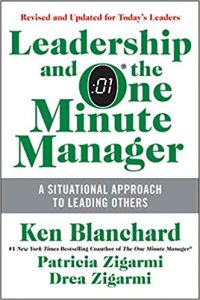Basic behavior is either the willful alignment to established standards, or the willful disobedience of those standards.
 In last week’s blog, we discussed the importance of distinguishing competence from behavior to maximize performance improvement. Today, we continue this conversation.
In last week’s blog, we discussed the importance of distinguishing competence from behavior to maximize performance improvement. Today, we continue this conversation.
Behavior manifests itself from the motivation behind how an employee does what he does once he’s part of a process — it’s his attitude and corresponding actions.
Ignorance has to do with competence, not behavior. Entitlement, laziness, and ambivalence manifest themselves as behavior.
The goal is to align behavior with the values and ethics of the integrator.
The motivation structure of your integration business should provide incentives, so people behave in a way that is aligned with the values and the ethics of the company, while discouraging behaviors that don’t align through disincentives.
The Navigate Book Club includes a couple good references that are helpful for integrators interested in aligning behavior with values and ethics.
 There are many leadership and management books available that use new words or package concepts differently but Navigate prefers references that teach foundational knowledge without a lot of buzzwords or trendy gimmicks. These books stand the test of time and produce the desired results.
There are many leadership and management books available that use new words or package concepts differently but Navigate prefers references that teach foundational knowledge without a lot of buzzwords or trendy gimmicks. These books stand the test of time and produce the desired results.
First is the Situational Leadership model, as defined by Ken Blanchard, a renowned author, speaker, business consultant and expert in leadership and management.
The Situational Leadership model explains in a very straightforward manner how to train and develop people based on their developmental level, not based on whether a manager personally feels comfortable interacting with them.
There are four primary leadership styles based on task behavior (directive) and relationship behavior (supportive):
- Telling: giving specific instructions and closely supervising (high directive, low supportive)
- Selling: explaining your decisions and providing clarification (high directive, high supportive)
- Participating: sharing ideas and facilitating the decision-making (low directive, high supportive)
- Delegating: turning over the decision-making and implementation (low directive, low supportive)
You might want to delegate dishwashing to your seven-year-old, but that would be irresponsible. In order for a child to build confidence — both from a competence and relationship perspective — you have to move through all four quadrants of the Situational Leadership model – and based on the child’s growth and development needs, not based on your schedule or desires.
The second reference has to do with motivation and behavior.
 Aubrey Daniels, Ph.D., an authority on applying scientifically proven laws of human behavior to the workplace, captures cause and effect in a straightforward manner in his book, Bringing Out the Best in People. Daniels specializes in creating effective performance-measurement systems.
Aubrey Daniels, Ph.D., an authority on applying scientifically proven laws of human behavior to the workplace, captures cause and effect in a straightforward manner in his book, Bringing Out the Best in People. Daniels specializes in creating effective performance-measurement systems.
Every behavior needs to have consequences.
These consequences can be used to increase a specific behavior, through positive reinforcement (getting something they want) or negative reinforcement (taking away something that they don’t want). There also need to be consequences that decrease certain behaviors, through punishment (getting something they don’t want) or a penalty (losing something they have and want).
In a nutshell, those four dynamics drive everybody’s behavior. The challenge comes in the fact that those types of consequences don’t necessarily drive other’s behavior like they drive my behavior.
Conclusion
What Navigate finds with many integrators, is that leaders try to motivate their people based on the motivation structure that works for the leaders instead of the motivation structure that resonates with their work force.
Leaders must understand from their employees’ perspective which combination of those four models creates the correct motivation structure — and it may be very different from the combination that is preferred by the leaders.
This article comes from our partners at Navigate Management Consulting and has been published with their express permission.
 Do you want to learn more?
Do you want to learn more?
Join Navigate Academy!
Solutions360 is a proud sponsor of Navigate Academy. In the upcoming Module 12, Brad Dempsey, CEO of Solutions360, is the special podcast guest.
Don’t miss the next live webinar!
Friday, October 23rd @ 11:00 am CDT
Title : Capacity Planning & Resource Management

